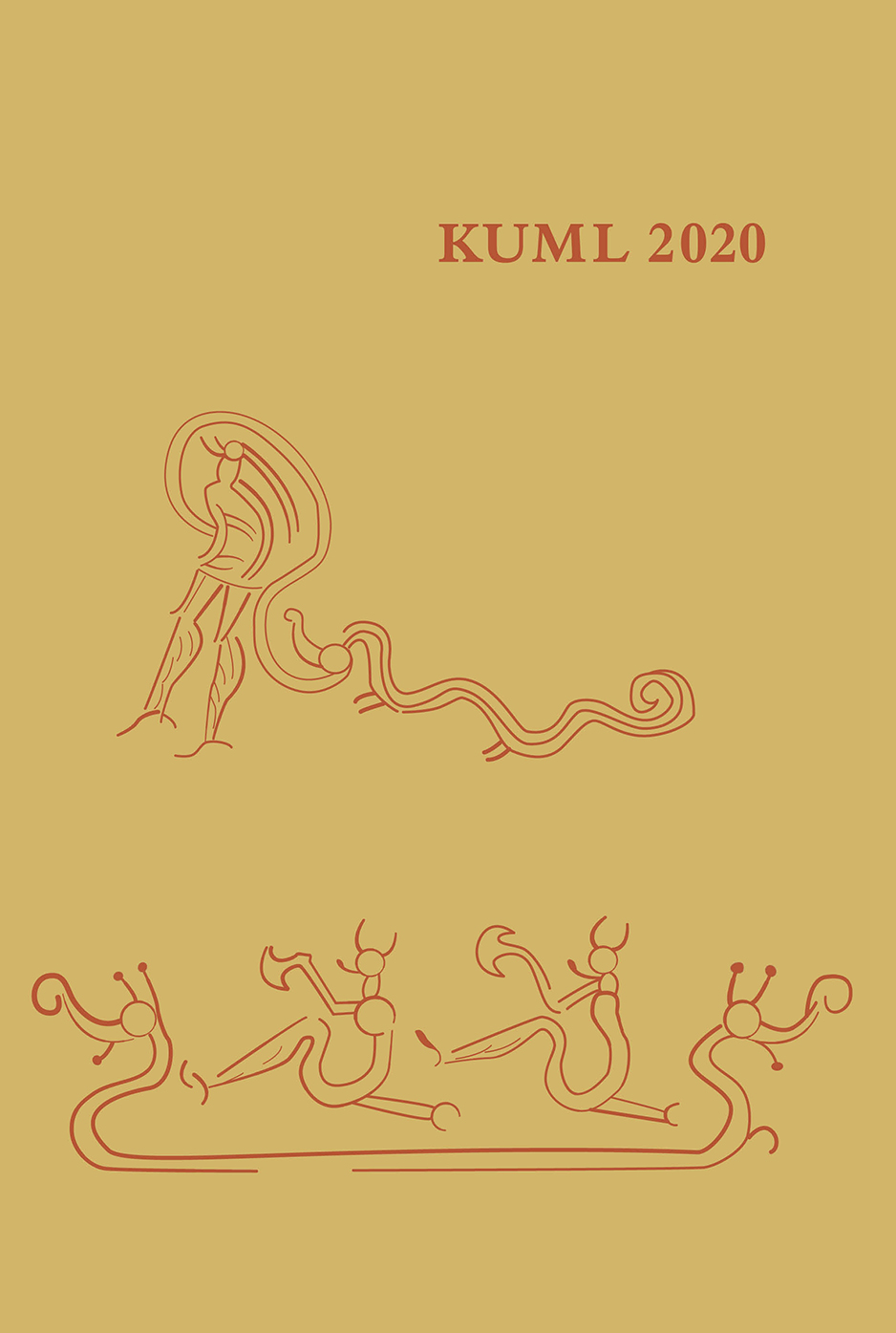To østjyske smedjer fra middelalder og renæssance
Belyst gennem arkæologiske fund og arkæometallurgiske analyser
DOI:
https://doi.org/10.7146/kuml.v69i69.126093Nøgleord:
Smedje, Østjylland, Middelalder, Renæssance, Arkæometallurgiske analyserResumé
Archaeological and archaeometallurgical investigations of two smithies in eastern Jutland – one Medieval, the other Early Modern
Recent excavations undertaken by VejleMuseerne have revealed remains of two smithies, one Medieval and the other Early Modern. Although the state of preservation, finds circumstances and methods of excavation were different and, in some ways, less than ideal, it proved possible to gain important and significant information from both.
A farmhouse with two small outhouses was found adjacent to a substantial Medieval settlement at Kristinebjerg Øst, located southwest of Fredericia, between Taulov and Erritsø. The farm’s main house, which measured c. 26 x 6 m and was dated to c. AD 1250-1350, appeared to be located separately from the main settlement. The building contained clear traces of a smithy in its eastern part, and the working space was estimated to have been about 6 x 6 m. Numerous plano-convex pieces of slag were found, together with some iron objects. SEM analysis of the slag suggests that they represent the primary smithing of local iron blooms, and the smithy has even been interpreted as a specialist forge with the sole function of refining impure domestic iron. No iron bloomery slags or furnaces were, however, found adjacent to the smithy or within the entire excavation area. The term “local iron” must therefore be viewed in a larger perspective, i.e. derived from the northern and eastern parts of Jutland. (figs. 1-4)
Traces of Medieval and Early Modern houses, two wells, some refuse pits and refuse layers were found in the village of Stouby, between Vejle and Juelsminde. Remains of a smithy were found, although the excavation was limited by an existing paved path, and it was therefore not possible to uncover the entire building. The smithy was 14C (AMS) dated to AD 1486-1573, while an adjacent refuse pit, A242, gave three rather different dates, namely AD 1415-1435, 1474-1521 and 1648-1664. The postholes of the smithy, A1, contained a large amount of hammerscale, both flat and spheroidal. Refuse pits, refuse layers and a well adjacent to the smithy contained a large number of plano-convex pieces of slag, as well as a smaller quantity of iron bars and debris. The content of soil samples from postholes and a refuse layer in the smithy, together with SEM EDX analysis of the slag, showed that refining of domestic iron, presumably from Jutland, had taken place, as well as hammer welding. Iron bars and nails ranged vastly in quality, from phosphorous-rich impure iron to iron of a better quality containing 0.1-0.2% carbon. None of the analysed pieces of iron were of domestic origin. They were mostly from Sweden or Norway, but a single iron bar may have originated from the Waloon area (Belgium). Mineral coal was also unexpectedly found in a refuse pit, A242, directly adjacent to the smithy. Coal is, by its very nature, an import in Denmark, and early archaeological evidence and mentions of it in the written sources are scarce in the 16th century. The Crown appears to have been ordering coal for use in the royal smithies by the late 1560s, and vast, regular imports from Germany and Britain are evident from the late 16th century onwards. The coal recovered from a refuse pit dated to the late 15th or early 16th century must therefore be considered quite an early find. The somewhat uncertain dating of the refuse pit could, however, render the find less significant (figs. 5-25).
Excavations of Medieval and Early Modern smithies are quite rare occurrences in Denmark, but the preliminary results appear to suggest a tendency towards larger smithies, relative to those of the Iron Age and Viking Age. The data are, however, still too scant to enable secure validation of this theory.
What the data do seem to confirm is that, from the 12th to the late 16th century, refining of impure, domestic iron blooms has been undertaken as one of the everyday tasks of a blacksmith, even if some almost pure, imported iron bars were also available. It has even been suggested that there is evidence of superficial carburisation or even case carburisation, but this must presently be viewed with scepticism.
The investigations of the two smithies seem to prove that valid data and important information on the blacksmith’s craft can be gathered, even when the circumstances are far from ideal. If sufficient archaeometallurgical analyses are undertaken, smithies seem almost invariably to yield significant knowledge on the history of technology.
Downloads
Publiceret
Citation/Eksport
Nummer
Sektion
Licens
Fra og med årgang 2022 er artikler udgivet i Kuml med en licens fra Creative Commons (CC BY-NC-SA 4.0).
Alle tidligere årgange af tidsskriftet er ikke udgivet med en licens fra Creative Commons.


